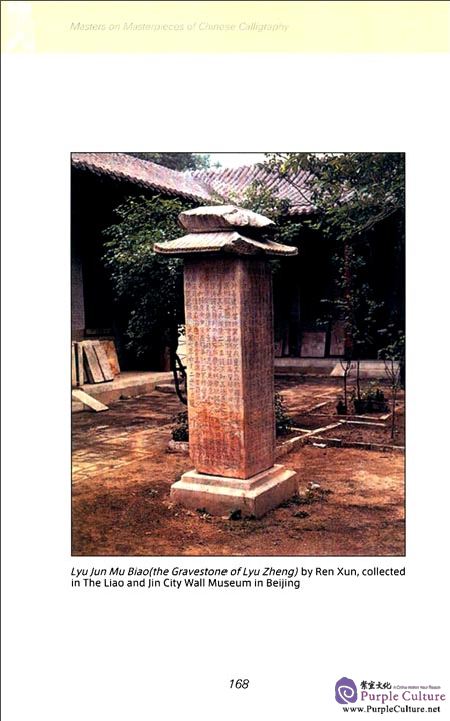Sample Pages Preview


Stele and Rubbing
Qi Gong
At the outset, those who made the inscriptions on the stele were not necessarily celebrities, calligraphers, scholars or officials. All they needed to do was write clearly.
It can be terrible if nobody can identify their writings. That is why Chinese characters on the stele are all in a standard script. In the early Tang Dynasty (618-907),
Emperor Taizong of Tang (Li Shimin, ruling from 626 to 649) was so fond of calligraphy that he learned from Wang Xizhi. He wrote in xingshu (semi-cursive script).
Maybe he did not know how to write in kaishu (regular script) or was not good at it. He inscribed two steles, both in xingshu : one was Hot Spring Inscription and the other
Jin Ancestral Temple Inscription . His son Li Zhi also inscribed steles for many ministers in such writing style. It was from then on that xingshu began to appear on steles.Empress Wu Zetian (ruling from 690 to 705) erected a stele for her gigolo (sort of lover) Zhang Changzong and said that he was the reincarnation of Wang Zijin. She had
the tomb of Wang Zijin dug up in Dongshan but could not prove whether it was Wang Zijin or not. So she let people erect a stele there, known as Stele for the Ascended
Immortal Prince . The Chinese characters on the stele were all written in caoshu (cursive script), marking that caoshu began to appear on steles. Since then, people started to use caoshu to transcribe books, essays and Buddhist scriptures. For example, the Treatise of Calligraphy by Sun Guoting was written in caoshu , so were the phenomena and
individual theories of Yogacara (literally “yoga practice”). Such a trend surely influenced the writing styles in this era. However, kaishu was still dominant in stele inscription.Why? Xingshu or caoshu could not be identified by a majority of readers.

